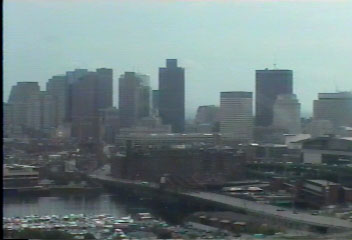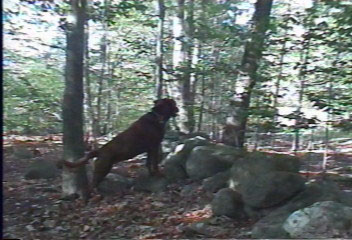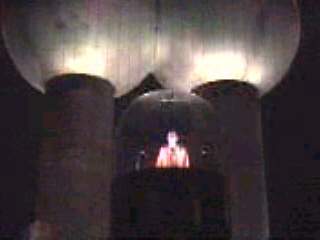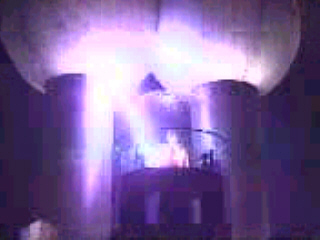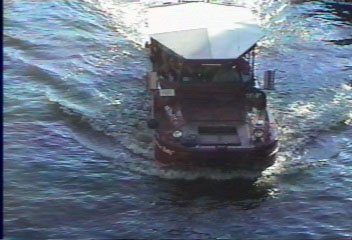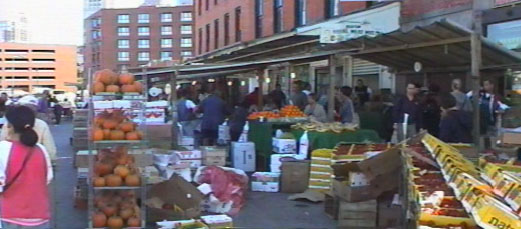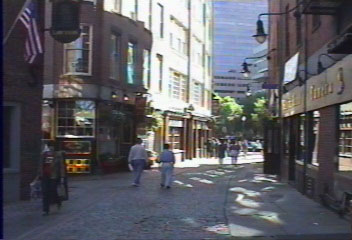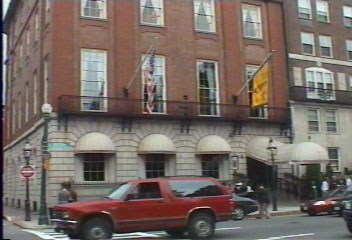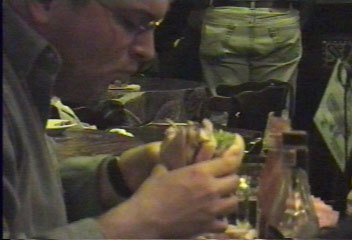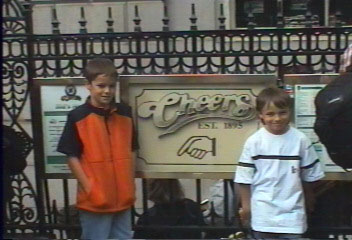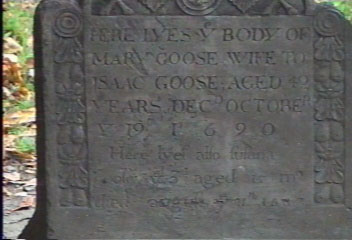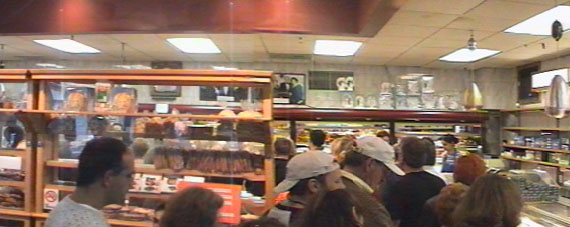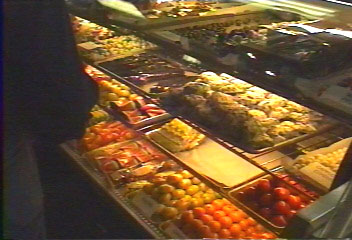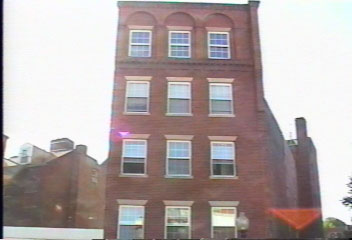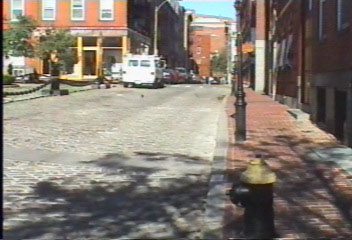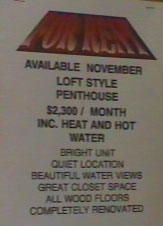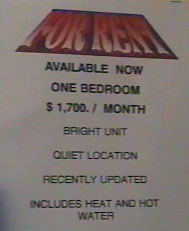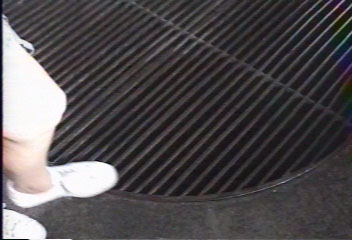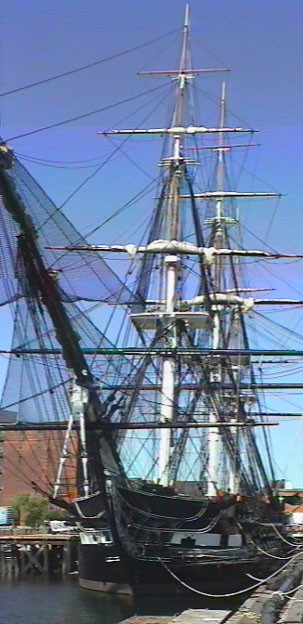
Although many complain about the traffic, (and it was frustrating at times), we enjoyed the entertainment of it as well. In short, driving in Boston is just like driving in Mexico. For a complete description click here.
Boston is a town of American history as well as an enjoyable place to visit. This page focuses more on the general sights and stories of our Boston visit. (Click here for our "Adventures on Boston History.")
The photo on the left is the U.S.S. Constitution, better known as "Old Ironsides", America's oldest floating battleship. The sides are not iron, but oak. This type of oak, found on the east coast, is an extremely hard wood. Cannonballs would simply bounce off the sides and so it got it's nickname "Ironsides".
